What Is Weirs?
Important Point
Weir is characterised as a barrier through which water flows into an open channel. The edge or surface on which the water runs is called the crest. The overflowing water layer is the water table.
If the nappe is discharged into the air, the weir gets a free discharge. If the discharge is partially under water, the weir is either buried or drowned.
A weir is a concrete or masonry bridge that is built over an open canal (such as a river) to alter the water flow characteristics. Weirs are built as an obstacle to the passage of water. This are widely used to calculate the volumetric flow of water, avoid floods, and make rivers navigable.
Also, Read: Difference Between Formwork, Shuttering, Centering, Staging & Scaffolding
Types of Weirs
- Types of Weirs depending on the Opening Shape.
- Rectangular weir.
- Triangular weir.
- Trapezoidal weir.
- Types of Weirs dependent on the Crest form.
- Sharp- weir crested.
- Broad crested weir.
- Narrow crested weir.
- Weir Ogee-shaped.
- Types of weirs depending on the effect of the sides on the nappe.
- Weir with the end of contraction (contracted weir).
- Weir without the end of contraction (suppressed weir).
1. Classification Based on Shape of Opening
1.1. Rectangular Weir
It’s the standard form of a weir. The upper edge of the weir can be sharply crested or narrowly crested. It is normally ideal for wider flow channels.
Rectangular weir derives its name from the form of the notch. The discharge through such a weir or notch is connected directly to the depth of water (H) and H is regarded as the head. One such head is influenced by the state of the crest, the contraction, the strength of the incoming stream as well as the elevation of the water surface downstream of the weir. Rectangular wires can be suppressed, partly contracted or completely contracted.
Flow Over Rectangular Weir
In order to find a flow over a rectangular weir, assume the elementary horizontal strip of water thickness dh and length L at depth h again from water level.
Strip area = L x dh
Theoretical speed of water = √2gh
As a result, discharge by strip
dQ = Cd x area of strip x √2gh
dQ = Cd x L x dh x √2gh
Where,
Cd = Discharge Coefficient
Through integrating of above formula with the limitations 0 to H, we could achieve the complete discharge Q.
Q = ∫OH Cd x L x dh x √2gh
In the end, discharge over the weir
Q = 2/3 x Cd x L x √2g x H 3/2
1.2. Triangular Weir
The form of the weir is basically a reverse triangle like V, so it’s often called V-notch weir. This kind of wire is well suited for calculating discharge over small flows with greater precision.
Flow Through Triangular Weir
In this considering the elementary horizontal strip of water width, i.e. distance h from the surface of the water.
Tan [θ/2] = [(AC)/(H-h)]
Therefore,
Area of Strip = dh x Width of strip AB
Area of Strip = dh x 2AC
Area of Strip = 2 (H-h) x Tan θ/2 x dh
Theoretical velocity of water = √2gh
Therefore,
Discharge through strip (dQ) = Cd x area of strip x velocity of water
dQ = Cd x Area of strip x √2gh
dQ = Cd x (2 (H-h) x Tan θ/2 x dh) x √2gh
Through integrating of above formula with the limitations 0 to H, we could achieve the complete discharge Q.
Therefore,
Q = ∫OH Cd x (2 (H-h) x Tan θ/2 x dh) x √2gh
In conclusion, we develop
Q = (8/15) x Cd x Tan θ/2 x √2g x H 5/2
1.3. Trapezoidal Weir
Trapezoidal weir is often named Cippoletti weir. That’s also trapezoidal in form and alters the rectangular weir with such a slightly greater potential for about the same crest weight.
The sides are bent outward with a slope of 1:4.
Flow Through Trapezoidal Weir
In cippoletti, all sides have an even slope. So, we will segment the trapezoid into rectangles and triangles.
So, Well, Full discharge over a trapezoidal weir
Q = discharge over rectangular weir + discharge through triangular weir
Q = [(2/3)Cd x L x √2g x H 3/2 ] + [ (8/15) x Cd x Tan θ/2 x √2g x H 5/2]
Also, Read: Difference Between Plinth Level, Sill Level, and Lintel Level.
2. Classification According to Shape of Crest
2.1. Sharp Crested Weir
The peak of the weir is so sharp that perhaps the water is visible from the crest.
The weir plate is beveled edge at the edges of the crest to achieve the required thickness. And the plate should be made of smooth brass, free from corrosion and nicks.
Flow over a sharp-edged weir is similar to a rectangular weir.
They are commonly used to assess the water on the farm. They are usually of three forms depending on the form of the notch.
These are
- Rectangular Weir
- Cipoletti Weir or Trapezoidal Weir
- V Notch Weirs or Triangular Weir
2.2. Broad Crested Weir
They are formed only in a rectangular form and are ideal for larger flows. Head damage would be minimal in the event of a large crested weir.
A weir which has a horizontal or almost horizontal crest sufficiently long in the direction of the flow such that the nappe is stabilised and the hydrostatic pressures are completely formed for at least a short distance.
2.3. Narrow Crested Weir
It is identical to a rectangular weir with a narrow rounded crest at the end. The discharge over shallow crested weirs is close to the discharge over rectangular weirs.
2.4. Weir Ogee Shaped
Normally, ogee-shaped weirs are established for the spillway of the storage dam. The crest of the ogee weir rises slightly and sinks into a parabolic shape.
Flow over ogee weir is almost close to flow over rectangular weirs.
Also, Read: Floating Slab Vs Monolithic Slab | What Is Monolithic Slab | What Is Floating Slab
3. Classification Based on End Contractions
3.1. Contracted Weir
The crest is cut in the shape of a notch and is similar to a rectangular weir. Head loss is going to occur in this type. The sides and the crest of the weir are far from the sides and the bottom of the approach channel. The nappe is fully contracted laterally at the ends and vertically at the crest of the weir. It was often considered an “unsuppressed” weir.
3.2. Suppressed Weir
The crest runs all the way through the river so the head loss is marginal. Rectangular wire, the notch or the opening sides of which coincide with the sides of the approach canal, often rectangular, extending unaltered downstream from the weir. This is the horizontal flow contraction that is “suppressed.”
Also, Read: What Is Grouting | Types of Grouting | Advantage of Grouting
Advantages of Weirs
- Able to measure a diverse variety of flows correctly.
- Can be compact and adjustable.
- Easy to build Seems to have a more precise discharge rating than flumes and orifices.
Disadvantages of Weir
- Relatively large head required, especially in free-flow conditions.
- The upstream pool must be kept clear of sediment and kept free of weeds and litter. Otherwise, the accuracy of the calculation would be impaired.
Also, Read: How to Building Construction Process Step by Step
Operation & Limitations For Weir
- Properly designed and mounted wires provide the most precise flow measurement. However, incorrect setting and procedure can result in significant errors in the calculation of discharge. In order to ensure accurate calculation performance, the following steps are mandatory for the use of weirs.
- The weirs should be set at the bottom of a long pool sufficiently wide and deep with a steady flow at speeds of less than 15cm/sec.
- Baffles can be placed in a weir pond to minimise velocity.
- The wall of the weir must be vertical.
- The middle line of the wire should be parallel to the direction of flow.
- The crest of the weir ought to be level such that the water flowing into it would be at the same width at both points around the crest.
- Notch should be a normal form and should have a rigid and straight tip.
- The weir crest is to be above the bottom of the approach channel.
- The crest of the weir should be set high enough to allow the water to fall freely below the weir.
- The depth of the water flow over the rectangular weir should not be less than 5 cm and not more than 2/3 crest distance.
- The scale or gauge used to measure the head should be about four times the approximate head. Zero of magnitude should be precisely at the same degree as the crest of the weir.
Limitations of Weirs
- Weirs are not necessarily optimal for flow measurement. A sufficient head is required to operate some kind of weir.
- They are not correct until the right circumstances are maintained.
- They need a significant loss of head, which is often not possible in flat gradient channels.
- Weirs are not ideal for silt transporting water.
- Weirs are not conveniently paired with a turnout structure.
Location of Weirs
- A weir must be situated in a balanced section of the river, where even the river is unwilling to alter direction.
- The weir needs to be installed high enough to meet the command specifications. During high flooding, the river could overwhelm its banks and reverse its course. The position with firm, well-defined banks must therefore be chosen for the construction of the weir.
- The site must have nice bed requirements, including such rock outcrops, where appropriate.
- Optionally, weirs must be reduced to a minimum.
Also, Read: Live Load Vs Dead Load | What Is Load in Civil
Weir Definition
A weir or low head dam is a barrier across the width of a river that alters the flow characteristics of water and usually results in a change in the height of the river level. They are also used to control the flow of water for outlets of lakes, ponds, and reservoirs.
What is the Purpose of a Weir?
Weirs are fixed barriers across a river or stream that force water to flow over their tops, where the height of the water above the weir can be used to calculate flow.
Types of Weirs
- Types of Weirs based on Shape of the Opening. Rectangular weir. Triangular weir. Trapezoidal weir.
- Types of Weirs based on Shape of the Crest. Sharp-crested weir. Broad- crested weir. Narrow-crested weir. Ogee-shaped weir.
- Types of weirs based on Effect of the sides on the emerging nappe.
Concrete Weir
A weir is a concrete or masonry structure which is constructed across the open channel (such as a river) to change its water flow characteristics. Weirs are constructed as an obstruction to flow of water. These are commonly used to measure the volumetric rate of water flow, prevent flooding and make rivers navigable.
Rectangular Weir Equations
Units the suppressed rectangular weir equation becomes Q = 1.84 B H3/2, where Q is the water flow rate in m3/sec, B is the length of the weir (and the channel width) in m, and H is the head over the weir in m.
Weir Structure
A weir is a concrete or masonry structure which is constructed across the open channel (such as a river) to change its water flow characteristics. Weirs are constructed as an obstruction to flow of water. These are commonly used to measure the volumetric rate of water flow, prevent flooding and make rivers navigable.
Weir Flow Equation
The equation recommended by the Bureau of Reclamation in their Water Measurement Manual, for use with a suppressed rectangular weir is: Q = 3.33 B H3/2, where Q is the water flow rate in ft3/sec, B is the length of the weir (and the channel width) in ft, and H is the head over the weir in ft.
Weir Discharge Coefficient
Under the same inflow condition, the discharge coefficient of short-crested weir is approximately 0.33–0.46, while that of broad-crested weir is 0.32–0.385, hence the former is stronger than the latter in terms of discharge capacity.
Also, Read: Tension Vs Compression | What Is Tension & Compression
Weir Construction
A weir is a small dam built across a river to control the upstream water level.Over time, the term weir has taken on a more general definition in engineering to apply to any hydraulic control structure that allows water to flow over its top, often called its crest.
Sharp Crested Weir Equation.
Sharp–crested weir, equation, Q = 3.33BH3/2, may be used if H/P < 0.33 & H/B < 0.33
Trapezoidal Weir Equation
Trapezoidal Weir Equation = Width of the weir crest in feet. = Height of the upstream water above the weir crest in feet. = CLH3/2 + CsSh5/2
Where:
- Q = flow
- L = crest length
- h = head above weir
- C = weir coefficient
- Cs = weir coefficient for the side section
Flow Over Weirs
Weirs are commonly used to measure or regulate flow in rivers, streams, irrigation canals, etc. Installing a weir in an open channel system causes critical depth to form over the weir. Since there is a unique relationship between the critical depth and discharge, a weir can be designed as a flow-measuring device.
Also, Read: Building Estimation Step by Step In Excel Sheet
How Does a Weir Work?
A weir is a small barrier built across a stream or river to raise the water level slightly on the upstream side; essentially a small-scale dam. Weirs allow water to pool behind them, while allowing water to flow steadily over top of the weir. In a weir, the surface over which the water flows is known as the crest.
Broad Crested Weir Calculator
Broad crested weirs are robust structures that are generally constructed from reinforced concrete and which usually span the full width of the channel. They are used to measure the discharge of rivers, and are much more suited for this purpose than the relatively flimsy sharp crested weirs.
What is Difference Between a Weir and Barrage?
A weir is an impermeable barrier that is built across a river to raise the water level on the upstream side. On the other hand, a barrage involves adjustable gates installed over a dam to maintain the water surface at different levels and at different times.
Why iIs a Weir Dangerous?
In a weir you could be placing yourself under a weight of water, which in a way is dangerous. The height of a weir affects its strength. ‘The power of the water varies with the flow rate, and when flow rates increase it gets heavier, and can trap a swimmer against a rock or obstruction,’ says Lynne.
Classification of Weirs
Thus, weirs are partially classified as rectangular, trapezoidal, triangular, etc. In the case of sharp weirs, the triangular weir is also called a V-notch weir, and one kind of trapezoidal weir is the Cipoletti weir.
Suppressed Weir
Standard Suppressed Rectangular Weir. A standard suppressed rectangular weir has a horizontal crest that crosses the full channel width. The elevation of the crest is high enough to assure full bottom crest contraction of the nappe.
Rectangular Weir
Rectangular weirs and triangular or v-notch weirs are often used in water supply, wastewater and sewage systems. They consist of a sharp edged plate with a rectangular, triangular or v-notch profile for the water flow.
How Many Types of Weirs Are There Based on the Shape of the Crest?
1. How many types of weirs are there based on the shape of the crest? Explanation: The four types are sharp-crested, broad-crested, narrow-crested and ogee-shaped weir.
Difference Between Broad Crested Weir and Narrow Crested Weir
Broad-crested weir: These are constructed only in a rectangular shape and are suitable for the larger flows. 3. Narrow-crested weir: It is similar to rectangular weir with a narrow shaped crest at the top. The discharge over the narrow crested weir is similar to discharge over the rectangular weir.
What Are Weirs?
Weirs are structures built in rivers and streams to measure and control the flow of water. They are usually made of concrete, stone, or timber and are designed to create a specific water level in a river or stream by obstructing the flow of water.
Which of the Following Is a Way of Classifying Based on the Shape of Opening?
Weirs can be classified based on the shape of their opening as follows:
- Rectangular weirs: These weirs have a rectangular opening and are the most common type of weir. They are used in a wide range of applications and are easy to construct.
- Triangular weirs: These weirs have a triangular opening and are commonly used in irrigation systems. They are also used in water treatment plants and in other applications where a moderate flow rate is required.
- Trapezoidal weirs: These weirs have a trapezoidal opening and are commonly used in large-scale irrigation systems. They are also used in industrial applications where a high flow rate is required.
- Cipoletti weirs: These weirs have a curved opening and are used in applications where a high flow rate is required. They are commonly used in large-scale irrigation systems and in hydroelectric power plants.
Ogee Shaped Weir
An ogee-shaped weir is a type of weir that has a curved profile in the shape of an “S” or an “ogee” when viewed from the side. The ogee shape allows for a smoother transition of water over the weir compared to a straight-edged weir, which can cause turbulence and reduce accuracy in measuring flow rates.
The Shape of Ogee Weir Is
The crest of the ogee weir is slightly rises and falls into parabolic form. Flow over ogee weir is also similar to flow over rectangular weir.
Advantages of Cipolletti Notch Over Trapezoidal Notch
Cipolletti notch and trapezoidal notch are two commonly used types of weirs in hydraulic engineering. Here are some advantages of Cipolletti notch over trapezoidal notch:
- Cipolletti notch has a wider range of discharge measurement
- Cipolletti notch is less prone to clogging
- Cipolletti notch has a lower head loss
- Cipolletti notch is easier to install
- Cipolletti notch is suitable for measuring wide channels
Function of Weir
A weir is used to prevent flooding, measure water flow, and hold water. This water can be used in towns, homes, industry, or irrigation.
Trapezoidal Weir Formula
The formula for the discharge over a trapezoidal weir can be expressed as:
Q = C × L × H^1.5
where:
- Q = Discharge (volume per unit time, usually in cubic feet per second or cubic meters per second)
- C = Discharge coefficient, which depends on the geometry of the weir and the velocity distribution in the approach flow (typically ranges between 0.55 and 0.65)
- L = Length of the weir crest
- H = Head of water above the crest of the weir, also known as the “weir height” or “head of water on the weir”
The Classification of Weir According to Construction Material Is
- Timber Weirs: These weirs are constructed from wood or timber. They are commonly used in small streams or channels, where the flow rate is not very high.
- Masonry Weirs: These weirs are constructed from stones, bricks, or concrete blocks. They are more durable than timber weirs and can be used in larger rivers or channels.
- Steel Weirs: These weirs are constructed from steel plates or beams. They are typically used in large rivers or channels with high flow rates
- Earthen Weirs: These weirs are constructed from soil or earth. They are simple to construct and can be used in smaller streams or channels.
- Rock-fill Weirs: These weirs are constructed by placing rocks or boulders on top of each other to form a weir. They are commonly used in mountainous regions where rock is abundant.
Like this post? Share it with your friends!
Suggested Read –
- Scaffolding Rate Per M3
- Top 10 Cement Companies in USA
- Top 10 Best Cement Companies In India 2021
- Top 10 Bathroom Fittings & Sanitary Brands India
- What Is Grouting | Types of Grouting | Advantage of Grouting
- What Does Parapet Mean | Types of Parapet Wall | Uses of Parapet Wall
- Cinder Block Vs Concrete Block | What Is Cinder Blocks | What Is Concrete Blocks
Originally posted 2023-05-03 18:35:41.
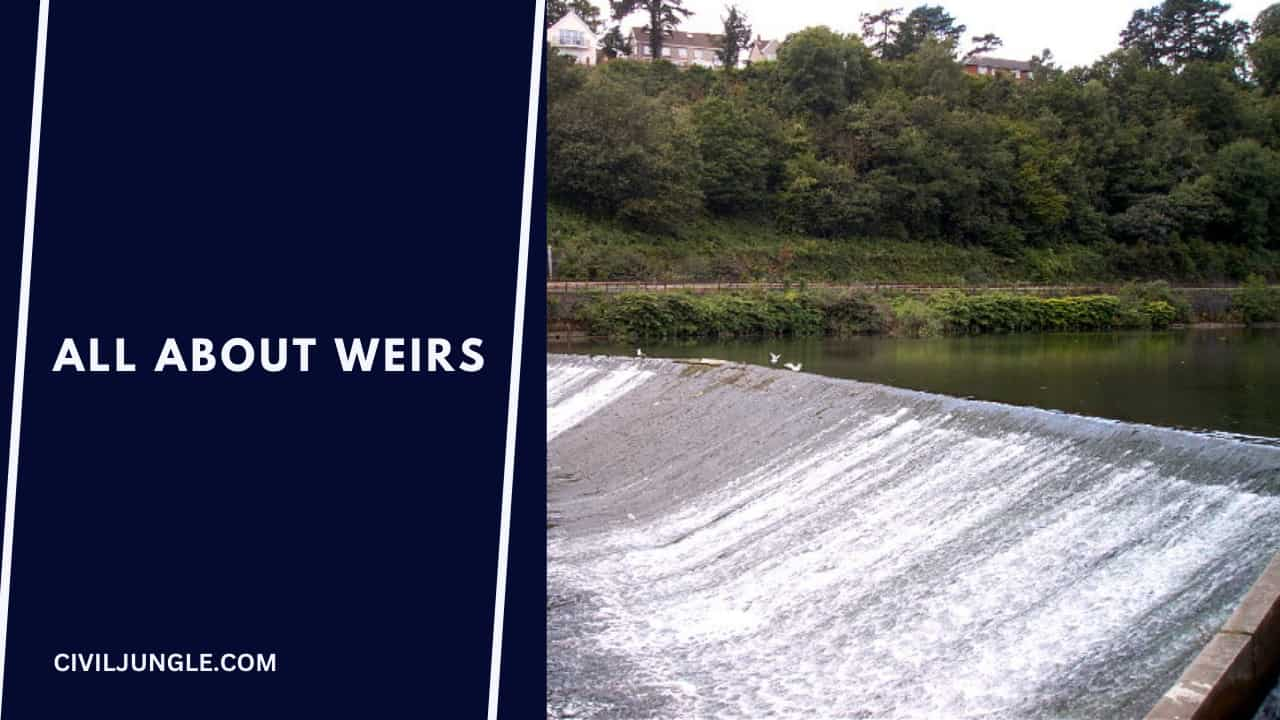
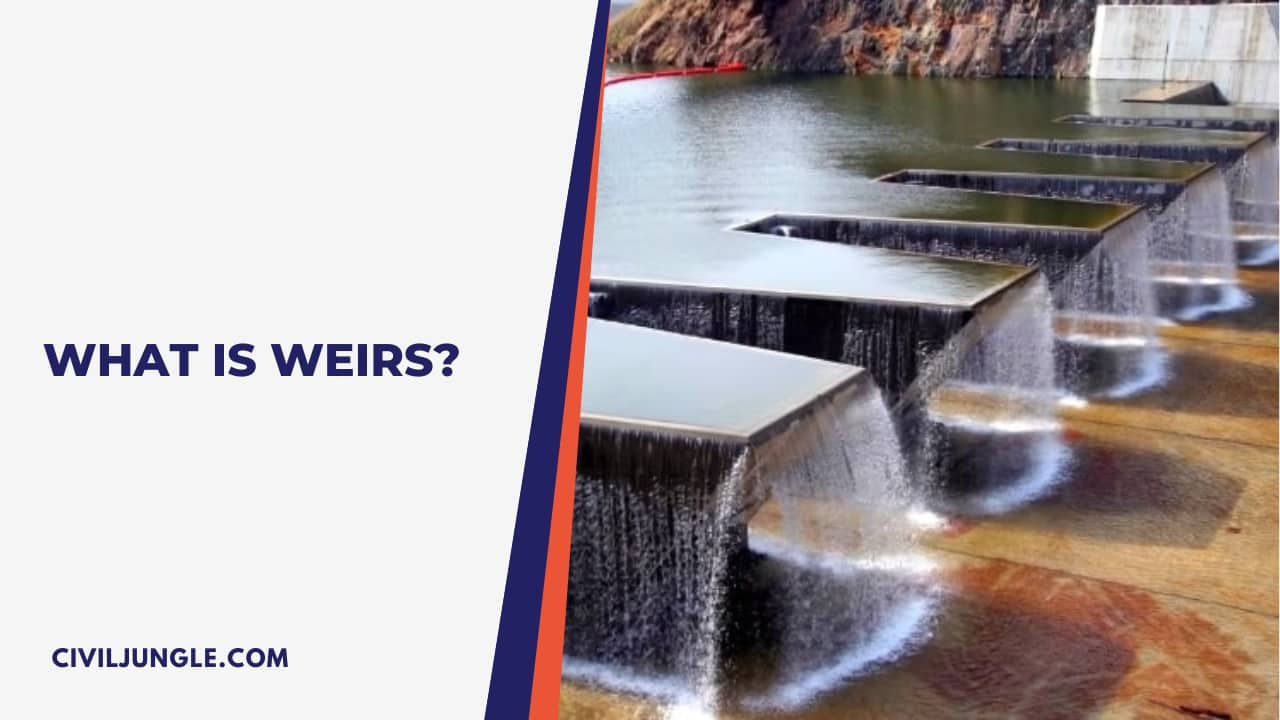
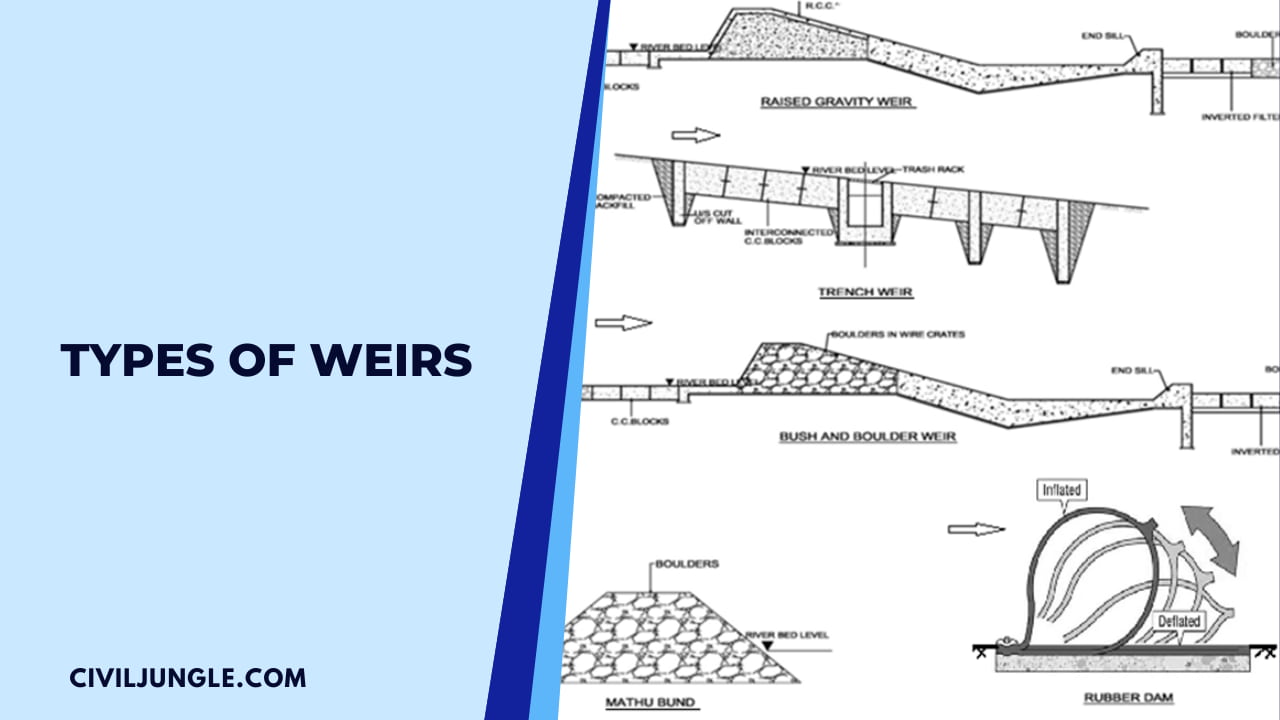
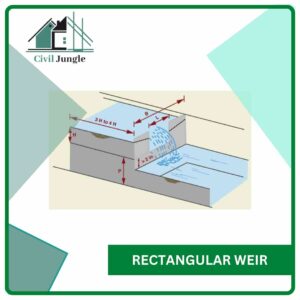

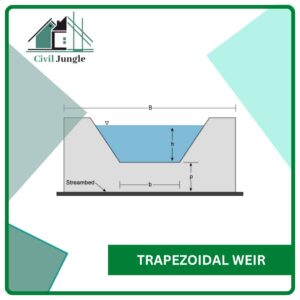
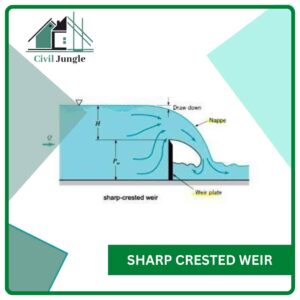
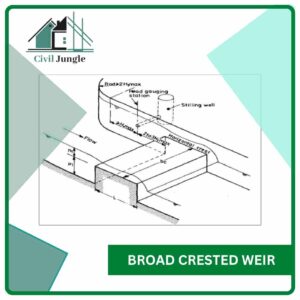
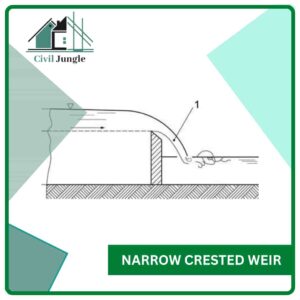

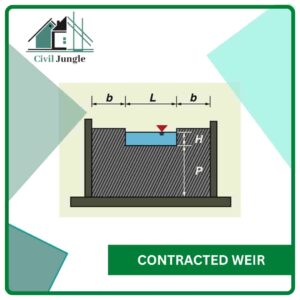
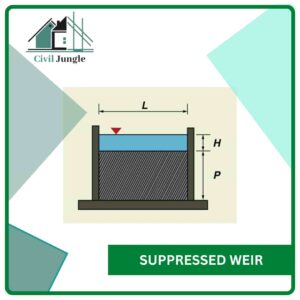
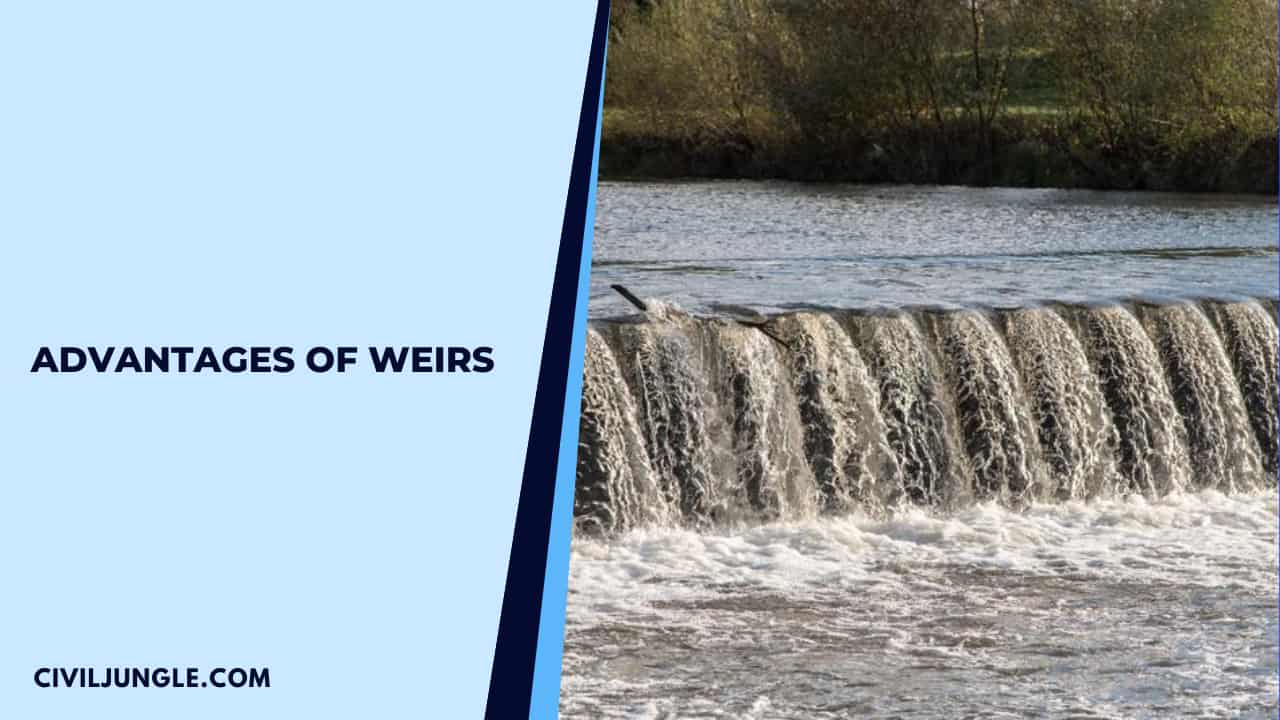

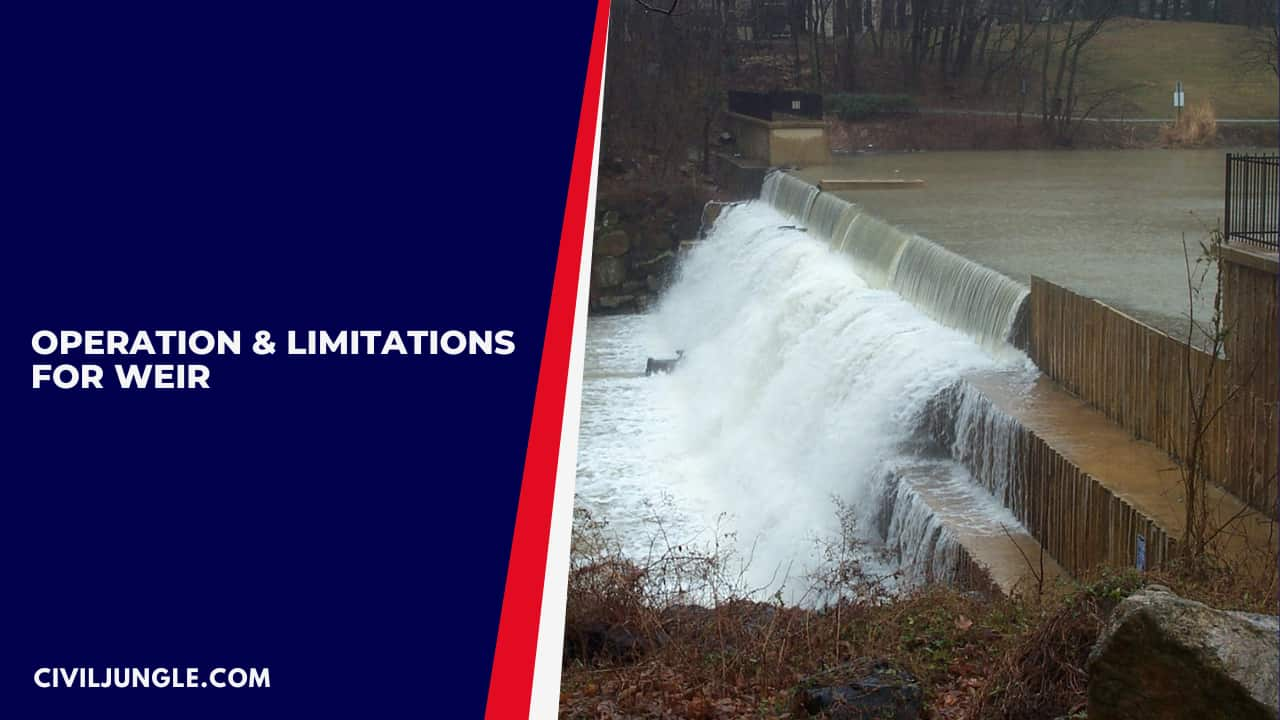
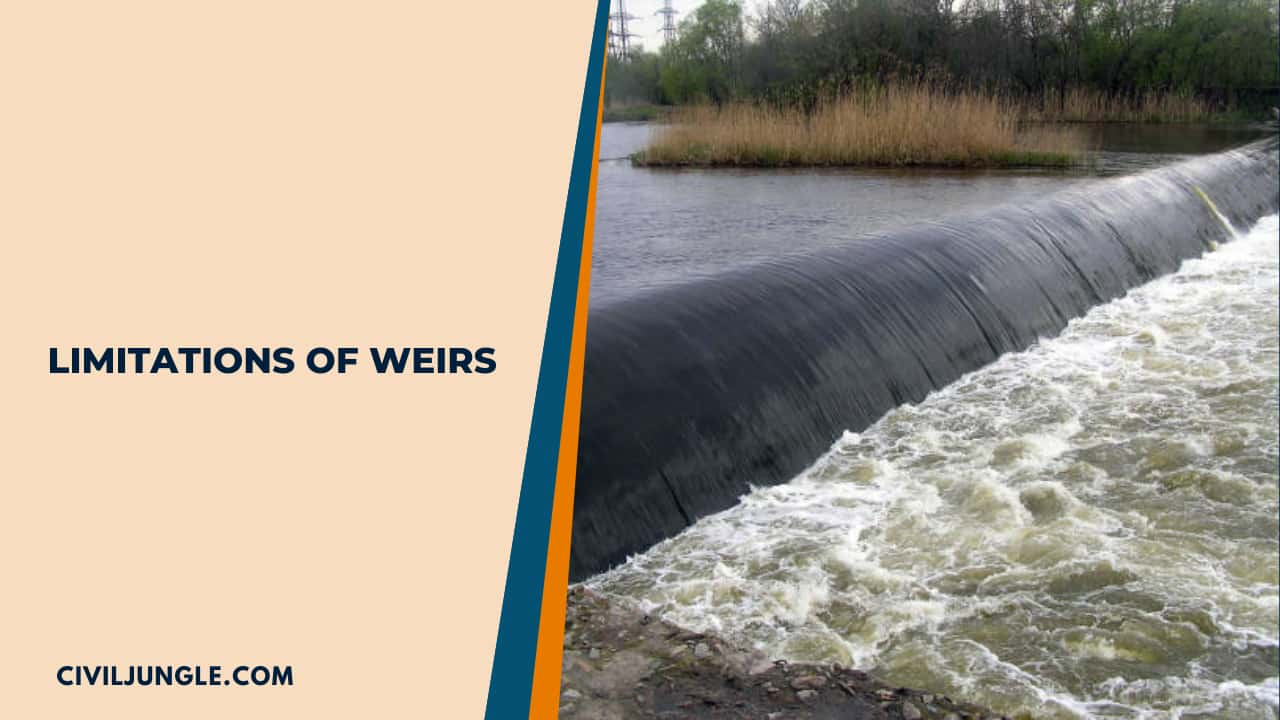
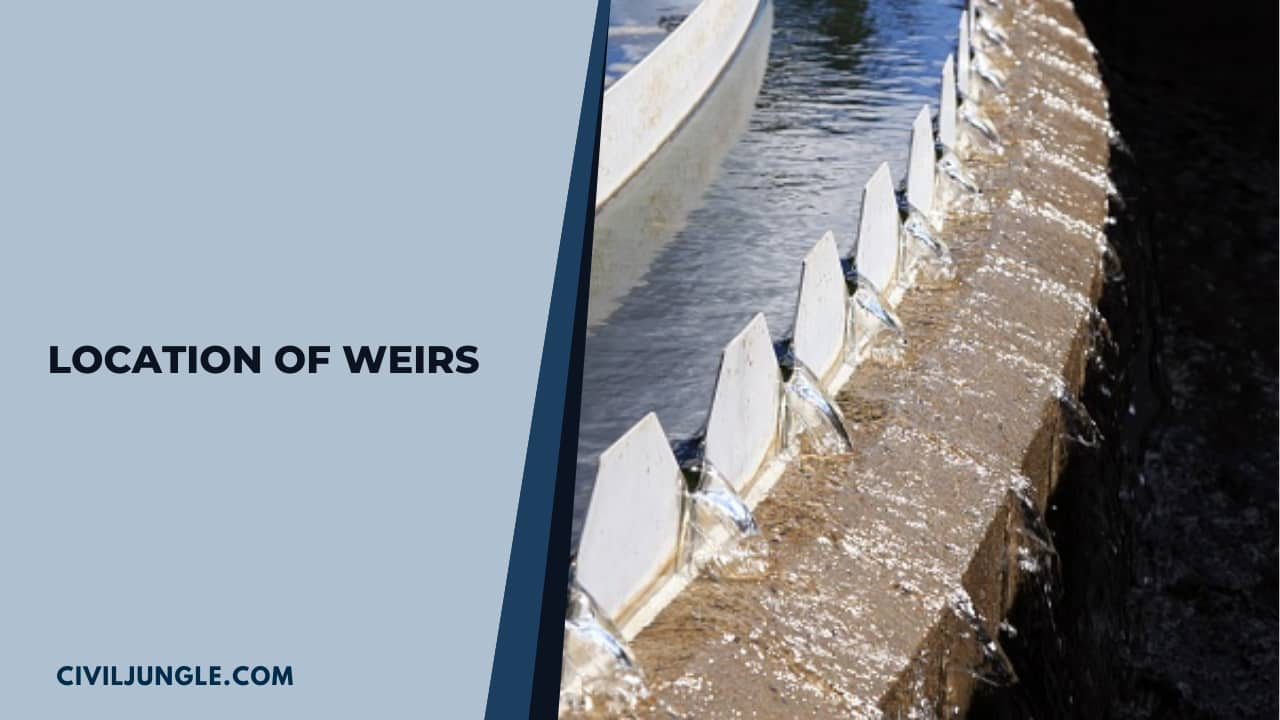

Leave a Reply